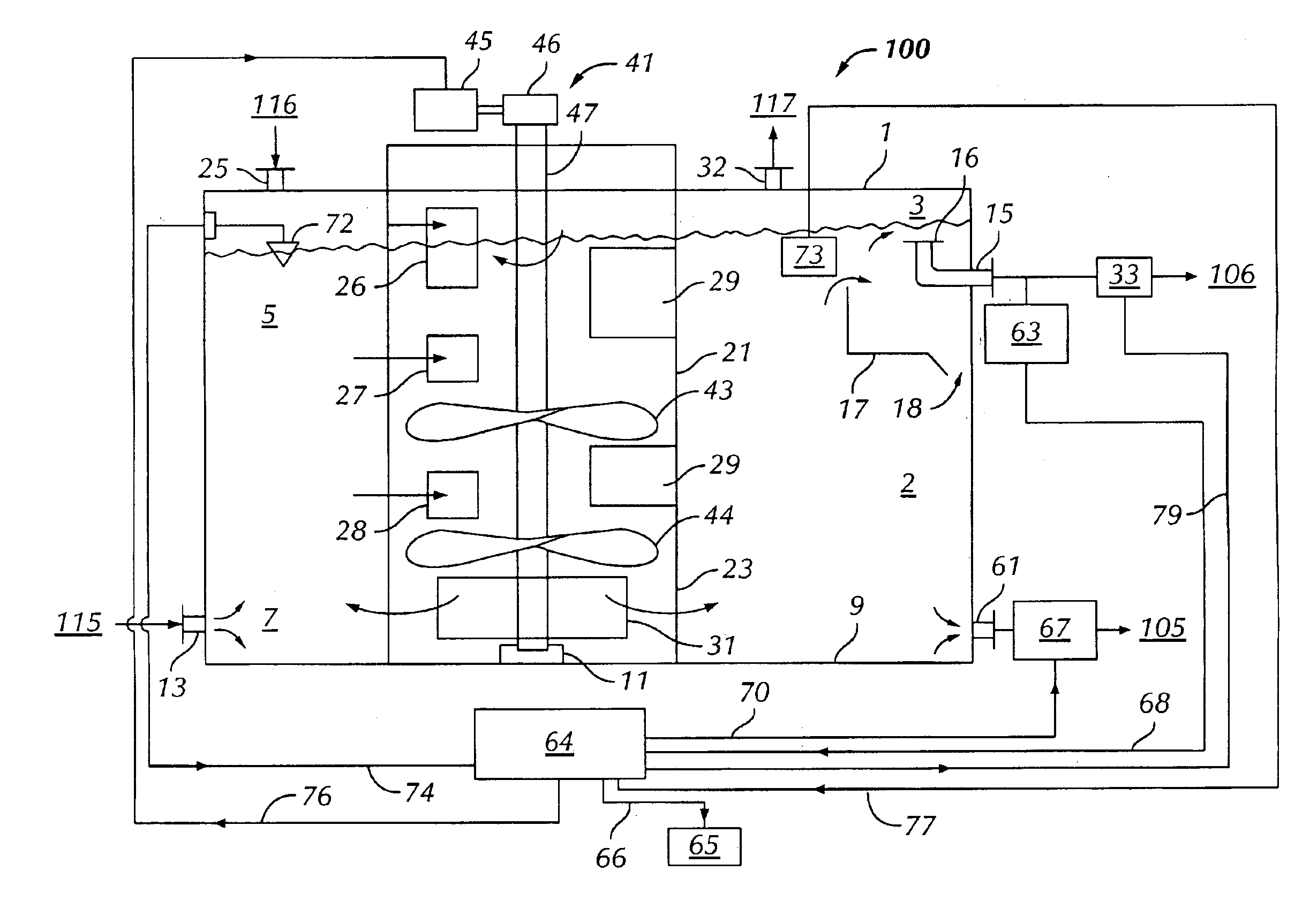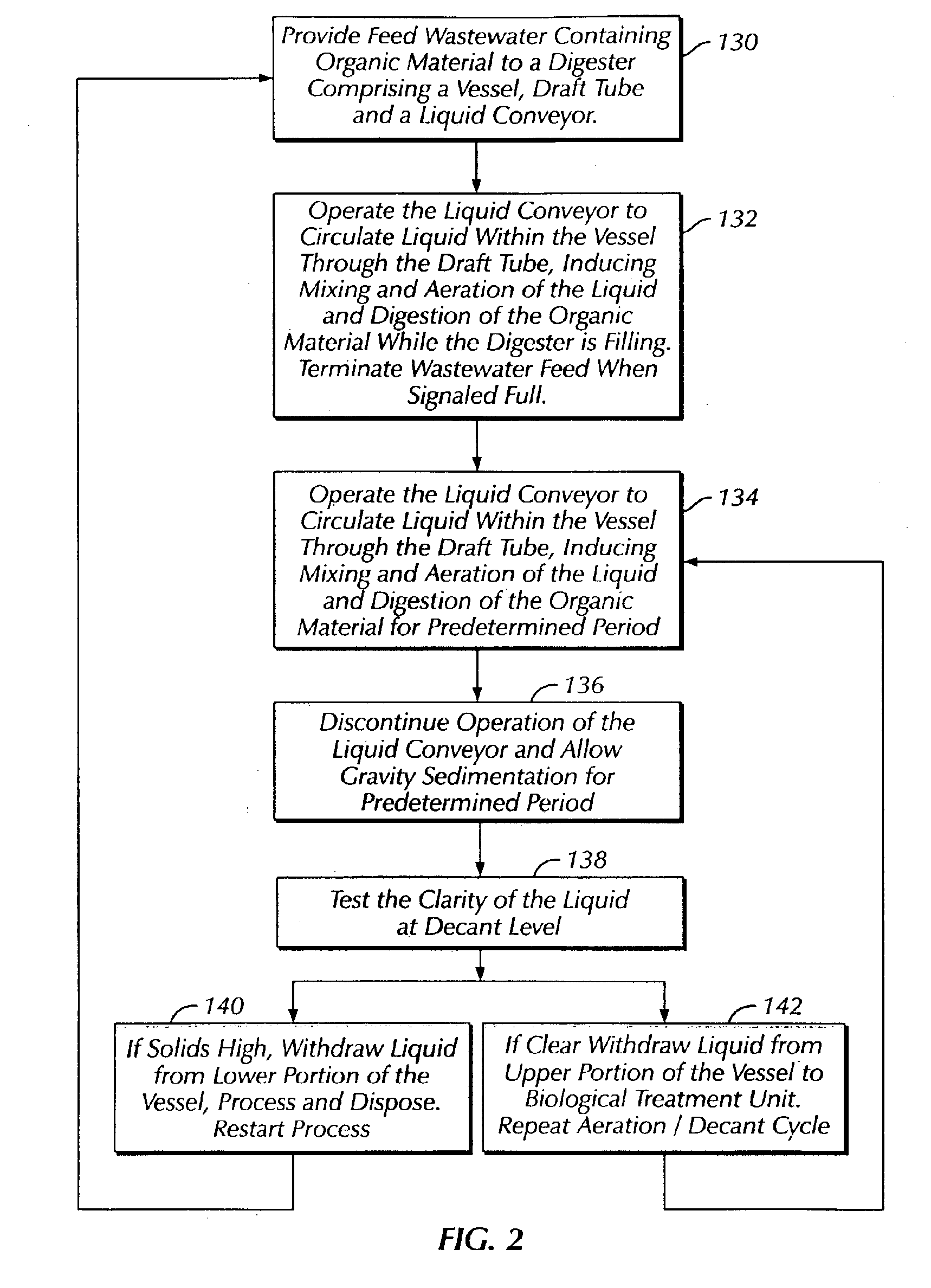Sludge digestion methods and apparatus
- Summary
- Abstract
- Description
- Claims
- Application Information
AI Technical Summary
Benefits of technology
Problems solved by technology
Method used
Image
Examples
Embodiment Construction
With reference to the figures, the invention relates to an improved aerobic wastewater digester and methods of operating it. Prior aerobic wastewater digesters have the drawbacks that they often yield residual sludge that is relatively non-concentrated and much less thoroughly digested than is theoretically possible. As a result, prior aerobic digesters yielded relatively large amounts of relatively poorly concentrated sludge, resulting in larger sludge disposal costs than can be obtained using the digesters disclosed herein. As described herein, the improved sludge digester can more thoroughly degrade wastewater sludge and concentrate it to a greater degree than previous aerobic sludge digesters, thereby reducing the costs associated with disposal of the sludge and potentially rendering it more amenable for post-digestion sludge processing. In addition, the aerobic sludge digester disclosed herein can be operated under a wider range of conditions than other digesters, including und...
PUM
| Property | Measurement | Unit |
|---|---|---|
| Fraction | aaaaa | aaaaa |
| Fraction | aaaaa | aaaaa |
| Length | aaaaa | aaaaa |
Abstract
Description
Claims
Application Information
 Login to View More
Login to View More - R&D
- Intellectual Property
- Life Sciences
- Materials
- Tech Scout
- Unparalleled Data Quality
- Higher Quality Content
- 60% Fewer Hallucinations
Browse by: Latest US Patents, China's latest patents, Technical Efficacy Thesaurus, Application Domain, Technology Topic, Popular Technical Reports.
© 2025 PatSnap. All rights reserved.Legal|Privacy policy|Modern Slavery Act Transparency Statement|Sitemap|About US| Contact US: help@patsnap.com



